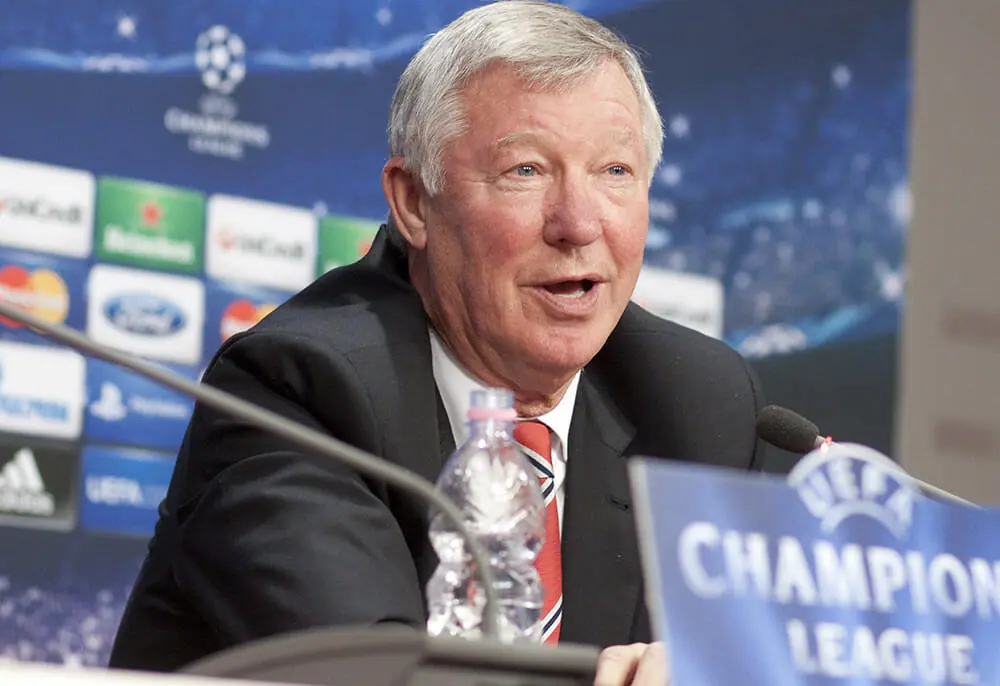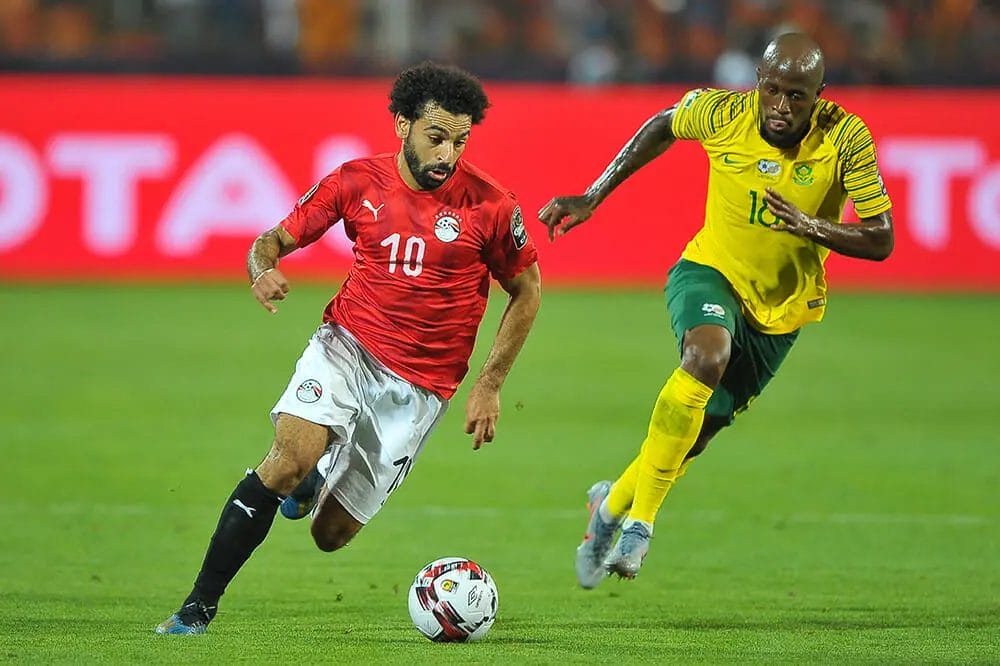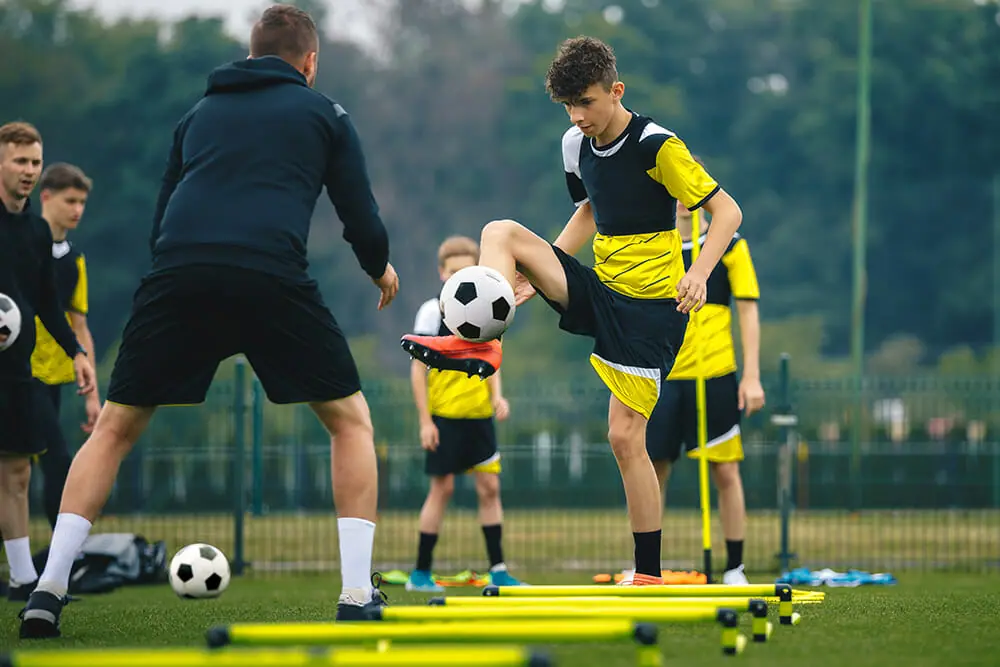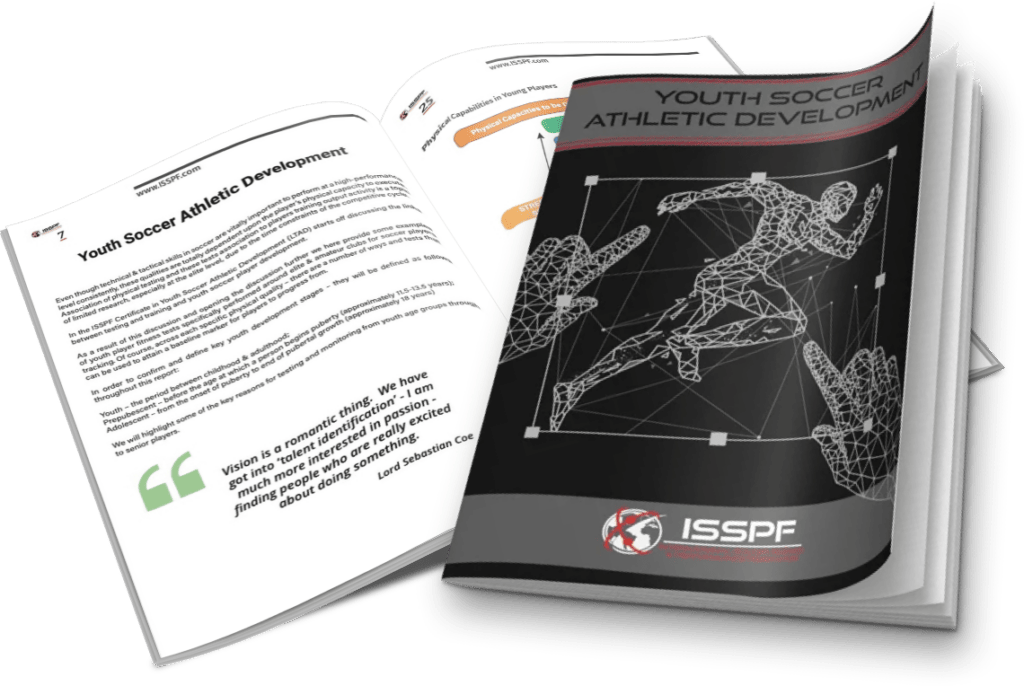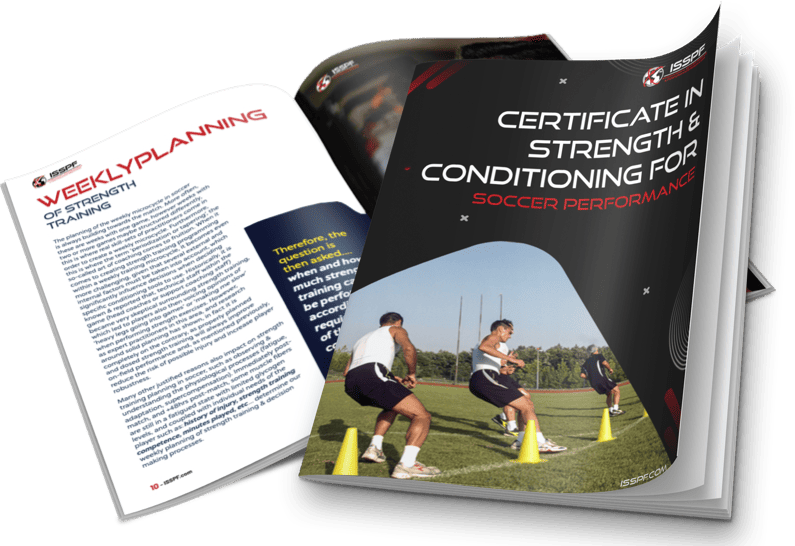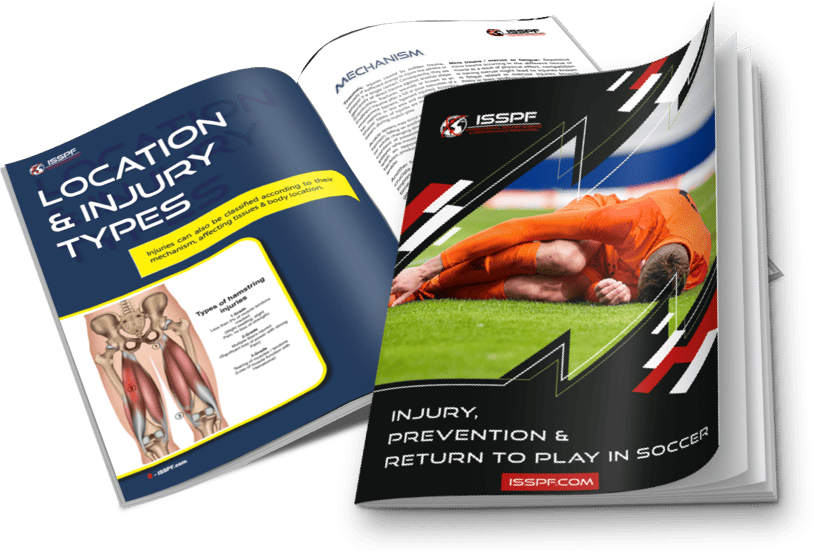Written by: Joshua Smith MSc. (High-Performance Director) South African Superleague
In the dynamic landscape of football management, there are only a handful of names that radiate as brilliantly as that of the illustrious Sir Alex Ferguson. Revered as an exemplar of seamlessly intertwining robust structures for youth development, his profound wisdom once said, “The thing about young people is, if you give them an opportunity, not only do they seize it, they never let you down”.
Within the vast expanse of the football universe, Sir Alex Ferguson’s dedication remains unparalleled and transcends mere admiration.
His unwavering commitment finds expression in tireless hours dedicated to observing and familiarizing himself with the burgeoning talents sheltered within the nurturing confines of Manchester United’s academy. A living legacy, he stands as a steadfast advocate for youth empowerment, ensuring that emerging prodigies are bestowed with the paramount opportunity to thrive on the grandest stages that the sport has to offer.
In the realm of cultivating nascent talents, the crucial institutions known as “centres for excellence” or soccer “academies” emerge as guiding lights. Their mission surges beyond the dimensions of football prowess, extending profound roots into the holistic development of burgeoning players.
FREE GUIDE: YOUTH SOCCER ATHLETIC DEVELOPMENT
Download this FREE Guidebook and discover the techniques and strategies that elite coaches use to help young players achieve their full potential.
DOWNLOAD
FREE!
The cardinal principle that underpins their existence remains unequivocal – the sculpting of latent potential not only within the realm of the pitch but also across the vast landscapes of education and life. This noble pursuit is fuelled by an unwavering pledge to uphold standards of unparalleled excellence and to diligently adhere to practices that resonate both on and off the field.
At the heart of this noble endeavour lies the nurturing of well-being and personal advancement, constituting the very foundation upon which the entire process is meticulously erected.
Through the assimilation of insights garnered from luminaries of the calibre of Sir Alex Ferguson and the earnest embrace of the foundational values of holistic growth, these bastions of excellence chart a course toward the unfurling of extraordinary talents.
In so doing, they enrich not solely the tapestry of football, but also weave intricate threads into the fabric of life itself, thereby leaving an indelible legacy of nurtured potential and enriched existence. Known within the game for committing hours watching & getting to know each and every kid within the academy at Manchester United, and ensuring youth was given every opportunity to succeed in the game at the highest level was one of his greatest strengths.
The aim of any ‘centre for excellence’ or soccer ‘academy’ system is to assist in the development pathway of young players to maximise their potential not only in football, but education & life through provision of good standards and practice on and off the pitch with well-being and personal development at the centre of the process.
In contemporary times, there has been a notable surge in literature and research dedicated to the realm of youth academies.
This surge encompasses not only an educational and technical developmental outlook but also delves profoundly into the physical and sport science dimension. This incursion has been enriched by the integration of a multitude of maturation studies.
Within the spheres of amateur, semi-professional, and professional football, spanning various football associations, a distinct paradigm shift has occurred.
A modern and pivotal transformation is underway, as these entities actively embrace and implement key developmental procedures, principles, and strategies pertaining to youth development. All these efforts converge with an overarching objective: the optimization of the Elite Player Performance Plan.
TAKE THE COURSE – Youth Soccer Athletic Development Course
Within England, The Premier League Academy Structure has undergone a significant transformation with the implementation of the Elite Player Performance Plan (EPPP) over recent times. This strategic initiative aimed to revolutionize youth development across football clubs within the Premier League, focusing on holistic player development, talent identification, and performance optimization.
Objectives of EPPP
The EPPP was introduced with a set of clear objectives aimed at enhancing the overall quality of youth development programs. These objectives include:
- Player Development: EPPP emphasizes a player-centric approach, focusing on nurturing technical, tactical, physical, and psychological skills to create well-rounded athletes.
- Talent Identification: The plan seeks to identify and nurture young talents early, ensuring a sustainable pipeline of players for both club and national teams.
- Academic Education: EPPP emphasizes the importance of providing players with quality education alongside their football training, ensuring a balanced development.
- Consistency and Quality: The plan establishes consistent standards for coaching, facilities, and player welfare across all Premier League academies.
- Pathway to First Team: EPPP aims to establish a clear pathway for talented players to transition from the academy to the first team, promoting homegrown talent.
Key Components
The EPPP is built upon several key components:
- Categorization: Academies are categorized based on their resources, facilities, and staffing. This categorization influences funding and regulations for each academy.
- Coaching and Development: The plan requires clubs to employ licensed coaches with a focus on player development rather than immediate results. Age-appropriate coaching methods are emphasized.
- Facilities: Premier League clubs are encouraged to invest in state-of-the-art facilities that promote player development and replicate the first-team environment.
- Scouting and Recruitment: Clubs are encouraged to expand their scouting networks to identify talents from a diverse range of backgrounds.
- Games Programme: A structured games program ensures that academy players face appropriate challenges and competitions to aid their development.
- Player Care and Welfare: The well-being of young players is prioritized, with guidelines to ensure their physical and mental health.
Impact and Future
The implementation of EPPP has brought about notable changes in youth development across Premier League academies. Improved coaching methods, better facilities, and a focus on talent identification have led to the emergence of young talents on the first-team stage. The success stories of players transitioning from academy to first team validate the effectiveness of EPPP’s objectives.
In the future, the EPPP is expected to continue shaping the landscape of youth development in English football. Its emphasis on holistic player growth, coupled with enhanced pathways to the senior team, ensures a continuous supply of skilled and homegrown players. As other football associations and leagues observe the positive outcomes of EPPP, they may consider adopting similar models to bolster their own youth development programs.
The Elite Player Performance Plan has ushered in a new era of youth development within the Premier League Academy Structure. By focusing on comprehensive player growth, talent identification, and setting high standards for coaching and facilities, the EPPP is not only elevating the quality of young players but also contributing to the sustainability of English football’s future talent pool.
Moreover, in order to begin to understand the processes involved within youth soccer, we must first understand what is meant by youth & athletic development.
What is Athletic Development?
- Athletic development is the progression of individuals or teams shown in a sporting or athletic scenario
- Developed through stimulation & delivery of high-quality & continuous training over a period of time
Why is Youth Development Important?
Youth development is important due to a myriad of factors. The fundamental process is that it enables the correct preparation of youth soccer athletes or footballers to rise to the various challenges faced through adolescence progressing into adult years attempting to reach & maximise their full potential.
Youth development activities can be promoted through specific youth development strategies such as strength and conditioning programs taking maturation levels into consideration, age related games for understanding, as well as following FA coaching course guidelines & experiences that help youngster develop cognitive, social, ethical, emotional, & physical skills.
What is a Long Term Athletic Development Model?
- It is the planned, systematic & progressive development of individual & team sport athletes across their maturation stages from youth to senior
- It’s also referred to as the long-term athletic development or long-term player development (LTAD) model
With the U-17 Africa Cup of Nations around the corner there maybe no better time to discuss the importance of soccer science in football, specifically within youth development football.
It is believed that whilst important at a senior level, the space where sport science practitioners can make the biggest influence is at youth level. There is sometimes decidedly less glamour associated with youth football and often unfortunately less financial rewards for those working at the level as well; but this is where we can truly develop & have the biggest impact on the players enjoyment & development.
Too often has a subjective approach been applied to youth development – this is not said to undermine the importance of the “coaches’ eye”, but rather note that there are blind spots and soccer science can go a long way in improving that vision.
The utilization of objective measures offers coaching staff a plethora of invaluable insights, particularly concerning the progression of young soccer players, with a particular focus on growth and maturation. Traditionally, the selection and categorization of youth players have often been influenced by physical stature and chronological age, disregarding the pivotal factor of biological age, encompassing early and late developers.
The critical question arises: are our current crop of youth coaches and heads of youth taking these aspects into account when evaluating potential ‘development’ players? Are they attuned to the role biological age plays in a child’s holistic development and its consequential impact on their physical performance?
For those unfamiliar with the concepts of biological age and chronological age, the former signifies how advanced one’s body development appears, while the latter indicates the time span that has elapsed since birth, expressed in years, months, and days. An essential consideration revolves around monitoring the growth and maturation of young players to discern whether they fall within the category of early or late developers.
A method of paramount importance in this trajectory involves predicting final adult height through the Khamis Roche method. This facilitates the estimation of Peak Height Velocity (PHV), a critical juncture marking the commencement and conclusion of significant growth spurts.
Amidst the intricate tapestry of youth soccer player development, comprehending and harnessing these objective metrics serves as a compass, guiding coaching decisions toward an enriched understanding of each player’s unique growth journey.
This holistic approach not only refines the player selection process but also ensures that the diverse nuances of development are embraced, leading to a more effective and tailored nurturing of young talents.
Why Is This Important?
From a football talent identification perspective by predicting whether a youth player is an early or late developer we gain insight as to why they might be perceived as superior or inferior on the field of play. This allows us to reduce selection bias, make an informed decision on talent selection and improve overall player development.
A study by Mann and van Ginnken (201) found that when scouts were allocated to three different groups (1. No age information; 2. Players date of births given; 3. And, players biological age given) the scouts in the first two groups selected the oldest players as the best players, but when given information around biological age, selection bias to choose the oldest players as the best players was reduced.
From a player development perspective, we can identify whether a player is an early or late developer and tailor their training experience to ensure continued development – for example early developers could be shifted up an age category so their physical prowess does not become a crutch they rely on to perform and then requires them to develop technically and tactically; whilst late maturing children can compensate for physical shortcomings by focusing on their technical capabilities (Unnithan et al., 2012).
Knowing when players are entering or completing a growth spurt will also allow for better load management and reduce injuries encountered by young players. Bult, Barendrecht and Tak (2018) found that “young soccer players were more prone to injuries during the 6 months after PHV”, whilst van der Sluis and colleague (2013) found that “Adolescent growth spurt seems to result in increased vulnerability for traumatic injuries. Afterwards athletes seem to be susceptible to overuse injuries.”
There is more to youth football than meets the eye of a coach or scout – where a child is on their growth and maturation journey plays a key role in their development and ultimately their chances of making it as a professional.
Soccer coaching & a more in-depth football science understanding alongside various youth development activities involved within this phase of player development plays a fundamental part in this, and one can only hope that the various football associations or soccer federations at the upcoming U-17 Africa Cup of Nations have recognized this and are not only selecting teams for now, but teams that will grow and develop to realize their maximum potential. It will be interesting to see how many of these youngsters will be competing at senior national level over the next few years.
To summarize Towlson et al., (2020) recommend the following when trying to maximise the LTAD process in sport:
- Estimates of players’ maturity status should be taken every 3–4 months during an annual season, with a focus on players approaching and during peak height velocity.
- Key stakeholders should be educated about maturation and peak height velocity.
- Clear lines of communication should be established with key stakeholders to identify the volume of weekly physical activity each child is engaged in.
- Key stakeholders should be aware of the increased risk of injuries owing to inappropriate training loads across peak height velocity.
With the ever-growing demand for specialists in youth athletic development and coaching within the realm of football, the need for well-prepared individuals is surging year after year. Many sport science graduates find themselves at a crossroads, pondering the path to breaking into the football industry.
Questions arise: What steps do I take? How do I specialize within sport science? These inquiries are not just intriguing but pivotal, especially when transitioning from the classroom to the world of professional football.
Introducing the tailored courses meticulously crafted by ISSPF specialists – a beacon for sport science students, those embedded in the football ecosystem, and enthusiasts passionate about advancing in specialized soccer science and performance domains.
Follow the link below to explore the highly sought-after ISSPF accredited Certificate in Youth Soccer Athletic Development (LTAD) online sport science course. This course offers a gateway to football science research, real-world applications, and developmental principles.
These insights will empower you to shape the growth of young soccer players while enhancing your understanding of how these advancements reverberate within your unique sporting environment.
The resonance of this article mirrors the universal need across various coaching levels in the game – nurturing the potential of young soccer players through their developmental phases. ISSPF’s commitment is to arm you with the tools for optimal practice in guiding these aspiring athletes through their athletic journey. The online sport science courses provided by ISSPF are born from the expertise of professionals entrenched in the vital youth development aspects encompassing essential football science domains.
This specialized performance and football coaching course unites industry experts from renowned clubs and organizations worldwide, offering a comprehensive perspective rooted in soccer science. Here, you’ll delve into the realms of football conditioning, nutrition, psychology, and physiology in tandem with specific sport science training principles and techniques.
To unveil the pathway to your enriched understanding and expertise, embrace the link below:
Youth Soccer Athletic Development Course
References (click +/- to expand/collapse)
References:
Bult, H., Barendrecht, M. and Tak, I., 2018. Injury Risk and Injury Burden Are Related to Age Group and Peak Height Velocity Among Talented Male Youth Soccer Players. Orthopaedic Journal of Sports Medicine, 6(12), p.232596711881104.
Mann, D. and van Ginneken, P., 2016. Age-ordered shirt numbering reduces the selection bias associated with the relative age effect. Journal of Sports Sciences, 35(8), pp.784-790.
Towlson, C., Salter, J., Ade, J., Enright, K., Harper, L., Page, R. and Malone, J., 2020. Maturity-associated considerations for training load, injury risk, and physical performance in youth soccer: One size does not fit all. Journal of Sport and Health Science,.
Unnithan, V., White, J., Georgiou, A., Iga, J. and Drust, B., 2012. Talent identification in youth soccer. Journal of Sports Sciences, 30(15), pp.1719-1726.
van der Sluis, A., Elferink-Gemser, M., Coelho-e-Silva, M., Nijboer, J., Brink, M. and Visscher, C., 2013. Sport Injuries Aligned to Peak Height Velocity in Talented Pubertal Soccer Players. International Journal of Sports Medicine, 35(04), pp.351-355
Share this article:
